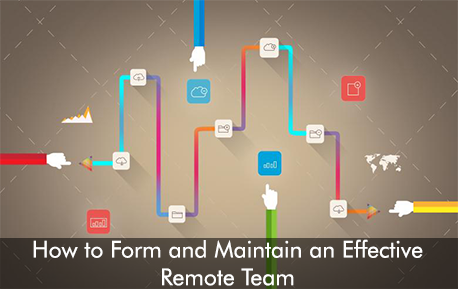Managing virtual teams is not an easy task because they are not working under the same roof. Hiring remote staff members from around the world can give practices and organizations a greater competitive edge due to an increase in knowledge pool and expertise. However the key here is on maintaining a high-performance level.
A thriving and growing remote team requires planning and understanding of what can be done remotely and communication plays a crucial part here. The effectiveness of your virtual team depends upon many factors that lead to quick collaboration and the use of communication tools.
How to Avoid any Mistakes when Dealing with a Remote Team?
In this article we will discuss the tips to successfully manage remote teams, which will support the productivity of your practice in the long run. Whether it’s the formation of a brand new remote team or the struggle with existing team members the suggestions will help you avoid any mistakes when dealing with a remote team.
- Communication – It is extremely vital that you communicate with your remote team members to ensure everyone is one the same page and has the same goals and ideas. One of the gravest challenges of working from home can be a lack of proper communication between the employer and the employee which can lead to confusion and work delays. Regular communication is the door to a successful and contended team.
- Use of technology and communication tools – The use of emails can be a quick platform to send brief and update on tasks. Programs like Slack can be a great option to maintain an ongoing conversation between team members. Everyone is kept in the loop even with different time zones. Two way instant messaging is also a good medium to provide work-related up-dates and changes especially when your team member is in another part of the world. Communication tools are an easy way to keep everyone engaged. One on one and video conferencing sessions can be held for daily check-in. Zoom and Google’s Team Hangouts are good modules to give the necessary resources and feedback to your remote team.
- Track work output – It is important to assess and monitor the productivity level of your virtual team members. For this the organization should know about the key indicators of success for each job.
- Does your remote team have the resources to deliver effective output levels? You need to make sure that your team has all the necessary tools and technology to get the work done. They require work equipment like, software, laptops, mobile devices and a high-speed WIFI connection to keep the workflow consistent.
Final Note
It is important that you trust your team members and give them the freedom and flexibility to get work done on a productive schedule and use tools for quick visual communication so the feeling of isolation does not exist.
Resources:
25 Tips to Help You Manage a High-Performing Virtual Team. (2020). Retrieved 22 May 2020, from https://biz30.timedoctor.com/strategies-for-managing-virtual-teams/
7 Tips for Successfully Managing Remote Teams. (2020). Retrieved 22 May 2020, from https://www.inc.com/jason-aten/7-tips-for-working-fsuccessfully-managing-remote-teams.html
The Ultimate Guide To Managing Highly Effective Remote Teams. (2020). Retrieved 22 May 2020, from https://www.timedoctor.com/blog/managing-remote-teams/







